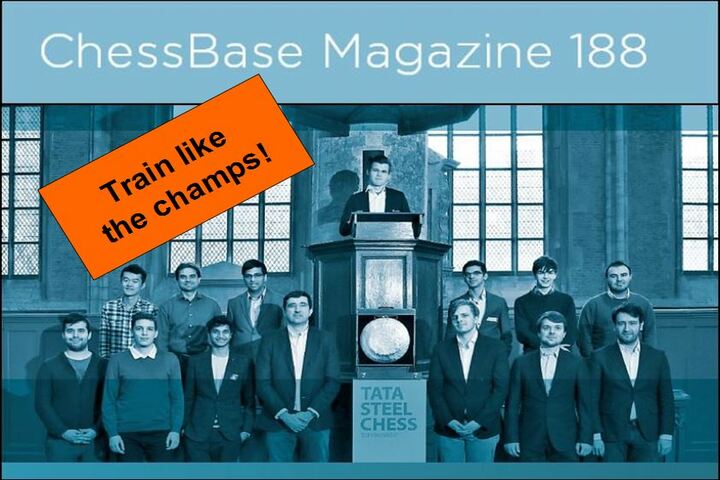Review: ChessBase Magazine 188
The new editors of ChessBase Magazine have been working to create a new incarnation of CBM for the benefit of chess players everywhere. Something a player could use to practice chess more so than just passively read. The latest iteration can now be seen in the newest issue #188.
Lately my own games have become quite lengthy, the win mostly comes in the final phase — the endgame. So when I open the ChessBase Magazine I generally check the "Excelling at the endgame" section. I believe studying the endgames regularly will give huge benefits.
The endgame theme dealt with in this issue is rook endgames, based on some emails and analysis Mueller received. In fact, he mentions we shouldn't be too critical of the players, because some examples used come from rapid games. And I think it's quite important to add another thing: in today's world most games are "rapid" in a sense. We no longer have adjournments that were common in Fischer's times. Now in order to play good endgames, a player must study them at home, and pray he or she will recall or find the right idea at the board with the clock ticking. But in order to have the right idea at the board, one needs to practice and here's where the new great idea from ChessBase editorial team comes into focus: train, train, train!
From Mueller's video one can start by learning some terminology which can be quite important for remembering endgames: one word used often is 'body-checks'.
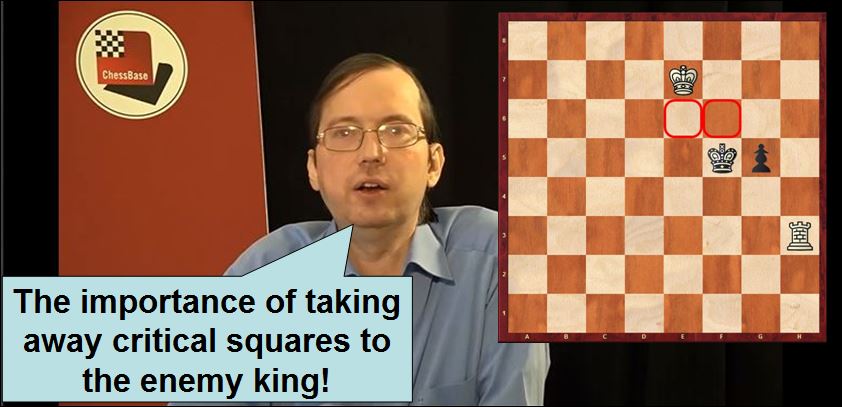
Definition of body-check
The terminology in itself is not important; what is important are the positions presented by Mueller, because they will form our mental library, which we will access during our tournament games.
For example, in this simple endgame, can you find the correct continuation for White in order to win?
Mueller explains it in the video, and this is good training, we are presented positions which come from real games, and we need to find the right move or plan. What makes it invaluable? That Mueller explains the concept behind the moves, so we need only to remember the concept and it will be easier to find the correct move in our games.
Yes, we could have learned it from a book, but here we have a human being who has mastered these endgames teaching in person. Add to that the interactive positions, and we have comprehensive training that is in some ways nearer to the real tournament world.
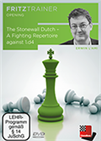 In the Dutch Stonewall Black from the very first move fights for the initiative. Let Erwin l'Ami take you on a fascinating journey to the depth and attractions of this unique opening. At the end you will be rewarded with a new repertoire against 1.d4!
In the Dutch Stonewall Black from the very first move fights for the initiative. Let Erwin l'Ami take you on a fascinating journey to the depth and attractions of this unique opening. At the end you will be rewarded with a new repertoire against 1.d4!But issue 188 is much more than training on endgames. There are many theoretical Opening articles in the section: Ideas for your repertoire. The one I checked out right away was from GM Romain Edouard on how to be aggressive against the Dutch.
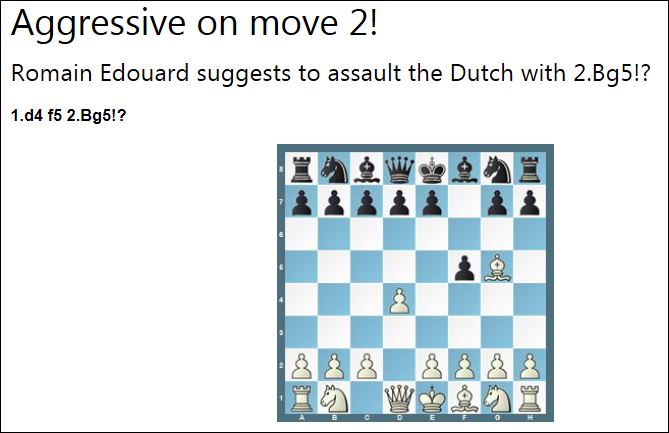
The article is based on four deeply annotated games which give a player all the ideas needed to play against Black's possible answers.
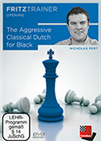 The Dutch (1.d4 f5) is known as a very aggressive and unbalanced opening, resulting in the lowest percentage of draws among the most common replies to 1.d4 . The opening became popular during the 1951 World Championship match, where both players tried it successfully. Today, players known for spectacular attacking chess are using the opening as a dangerous, surprise weapon.
The Dutch (1.d4 f5) is known as a very aggressive and unbalanced opening, resulting in the lowest percentage of draws among the most common replies to 1.d4 . The opening became popular during the 1951 World Championship match, where both players tried it successfully. Today, players known for spectacular attacking chess are using the opening as a dangerous, surprise weapon.But not all the theoretical articles are based on annotated games. One of the parts of the Opening section is made up of three videos. GM Daniel King has created a very interesting video on how to fight the King's Gambit, using an old book by Korchnoi and Zak, two experts in this opening.
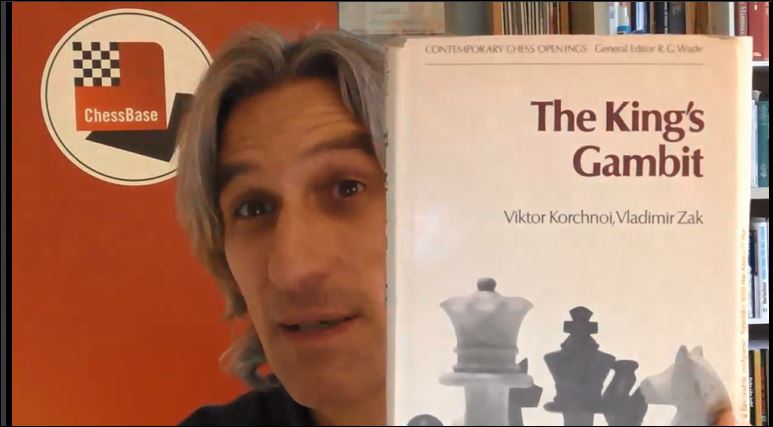
GM King revisits a classic he used in his youth for learning the King's Gambit
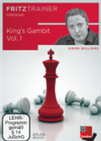 This DVD concentrates on the King's Gambit accepted with 3.Bc4. Williams has included a lot of novelties and interesting attacking variations that should wet the lips of any attacking player, looking for an interesting way of meeting 1...e5!
This DVD concentrates on the King's Gambit accepted with 3.Bc4. Williams has included a lot of novelties and interesting attacking variations that should wet the lips of any attacking player, looking for an interesting way of meeting 1...e5!When King was young, he used that book as his bible, in fact he played the White side of the King's Gambit for three or four years — literally [Daniel] King's Gambit! But King didn't limit himself at using a very old book from 30 years ago. He used more modern resources, like the Mega Database, and of course some theory from other books to create a video packed with information Black can use in dealing with the King's Gambit.
The system he recommends is based on the move d7-d5 after the moves:
1.e4 e5 2. f4 exf4 3.♘f3 d5
The other two videos are on the King's Indian and the Sicilian Najdorf. I have begun to study the Najdorf recently and although the video is dedicated to the White side, I still watched it all because I want to be sure I'll not be surprised in a tournament game if one of my opponents is a CBM subscriber, like myself!
Such a dynamic and popular opening as the Najdorf is developing the whole time. On this download, Daniel King updates lines that were included on his DVD but also responds to viewers’ requests, considering lines that he omitted from his original repertoir
Tournament coverage
In this issue there are also two tournaments extensively analysed: Tata Steel 2019 and the London Chess Classic 2018. For Tata Steel there are over 40 games annotated and then all the rest of the games played in that tournament. This is the equivalent of having a book on the tournament if one would just print out the annotated games.
I'll give here one game annotated by GM Fernandez to show the quality of the annotations:
For the London Chess Classic there are all the games played, and many annotated. I include here one annotated by GM Michał Krasenkow, because it's a 28-move draw, and many would think being a short draw the game is not interesting. But if we follow the depth of Krasenkow's annotations, we discover that even a near-miniature can be totally beyond the comprehension of the average chess amateur and even of the veteran club player who is not using an engine.
These two games, as well the many others, all deeply annotated, can also be used as example to understand how we should annotate our own games.
One section I enjoyed is "Coaching by experts". Simon Williams continues with his classic Move by Move series, where he makes full use of the ChessBase Interactive Training system. While presenting the game Williams stops at critical moment, asking viewers to find the correct move.

This important training tool is not based on cheap tactics. Instead, it asks how to evaluate the position, and come out with a plan, which will guide the moves one should choose as candidates. In this section there is also a video by GM Mihail Marin who discusses the differences between stable and unstable centres. And of course a classical game commented in video format by GM Dorian Rogozenco.
There are many other sections worthy of mention, but as reviewer I don't want to spoil all the surprises created by a hard-working ChessBase team for us. I believe just the material I have mentioned is really worth every penny in terms of the quality and amount of teaching material. I was pleased by the new training format, and I plan to use it month after month to improve my chess.
Yes, ChessBase can offer the best in training, but then it's up to us to not only pickup this training magazine but also put the amount of hours needed to improve. In a week I would say a minimum is between four and ten hours for an amateur who wants to see marked improvement in his tournament results.
Final thoughts
Throughout the review I've presented the importance of training. Training is the new direction the CBM editors team have been working towards. But we must not forget the pedagogic element. Through the experience of different GM-level players we have learned about openings, about endgame terminology and concepts, and of course we also have reinforced our calculation and visualization thanks to selected positions, tactical exercises and combinative motifs.
The hours of videos created by this group of Grandmasters are priceless. We must think of ChessBase Magazine as a double-edged weapon. I have it, but my opponents can use it too, so the only way to be truly prepared, is to have access to the information our enemies have, and train with it as much as possible!
Good luck!
Tata Steel 2019 with analyses by Anish Giri, Vishy Anand, Vidit, Peter Svidler etc. Yannick Pelletier, Erwin l'Ami and Mihail Marin present selected games in video format. Plus 11 opening articles with new repertoire ideas, e.g. Dutch with 2.Bg5!?
